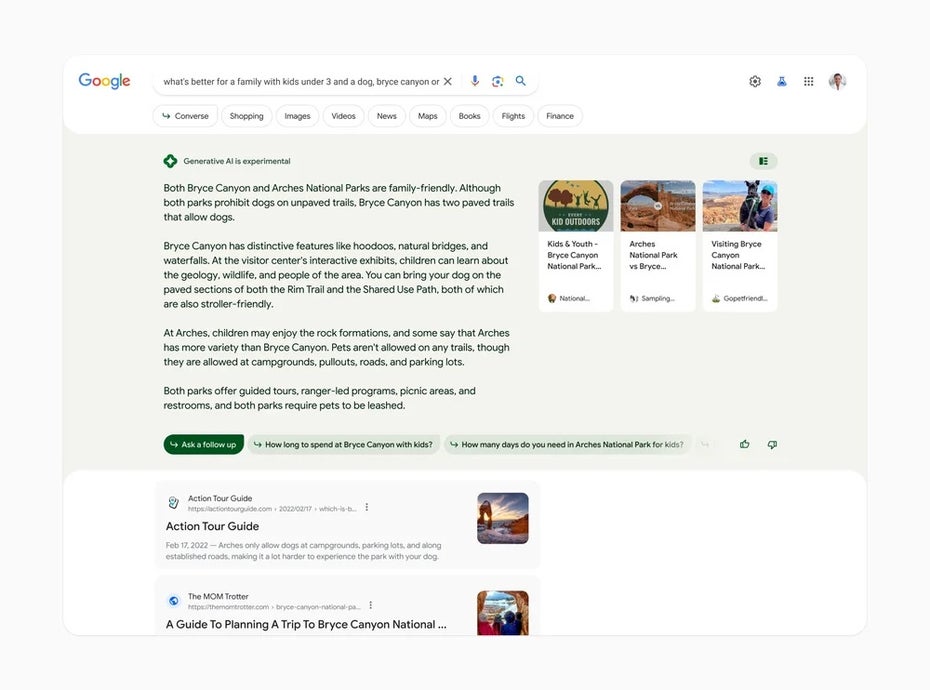At its developer conference Google I/O 2023, the Californian software company gave a preview of the search of the future. Of course, AI functions play a role in this – but Google remains true to its previous approach in some respects.
The AI hype triggered by the release of OpenAI’s AI chatbot ChatGPT does not stop at Google – on the contrary. Rival Microsoft has been able to steal market share from the industry leader by integrating ChatGPT into its Bing search, raising Google’s alarm.
How Google would react, especially in terms of search results and ads, has been the object of speculation ever since. As part of I/O 2023, Google has now unveiled its version of the AI-powered search of the future.
Unlike Microsoft, Google relies less on the chatbot approach – although the search engine provider has launched a potent ChatGPT challenger with Bard. Instead, Google remains largely true to itself.
Google search does get a little more colorful. However, the company refrained from a redesign à la ChatGPT Messenger. The support of integrated generative AI comes into play in answering search queries, among other things.
The search results display comes as a mix of chatbot-style AI responses and classic results. What is new is that even more complex questions are to be answered better in the future. Google calls its greased-up AI search results Snapshots.
Under the answer text with the most important and further information, users should be given the opportunity to ask questions. When answering, you switch to a chat style. Here – as with ChatGPT – the previously given answers flow into the response.

Google, by the way, continues to show links to the sources. The company wants to continue to ensure that traffic is generated to websites worldwide. For example, matching search results are displayed for the questions asked and, of course, advertising.
In a statement, Google stressed that ads are “an essential part of how the Internet works” and help people find “relevant products and services.”
In the future, AI will also be used in shopping ads. Here, “product descriptions with relevant, current ratings, prices and product images” are to be displayed. The AI-powered shopping experience draws on Google’s Shopping Graph and its more than 35 billion product listings.
The new Google search is currently still in the experimental stage and is available as Search Generative Experience (SGE) in the
Search Labs
integrated. It is available in the Chrome browser for the desktop and the Google app (iOS and Android), but initially only in English and only in the US.






